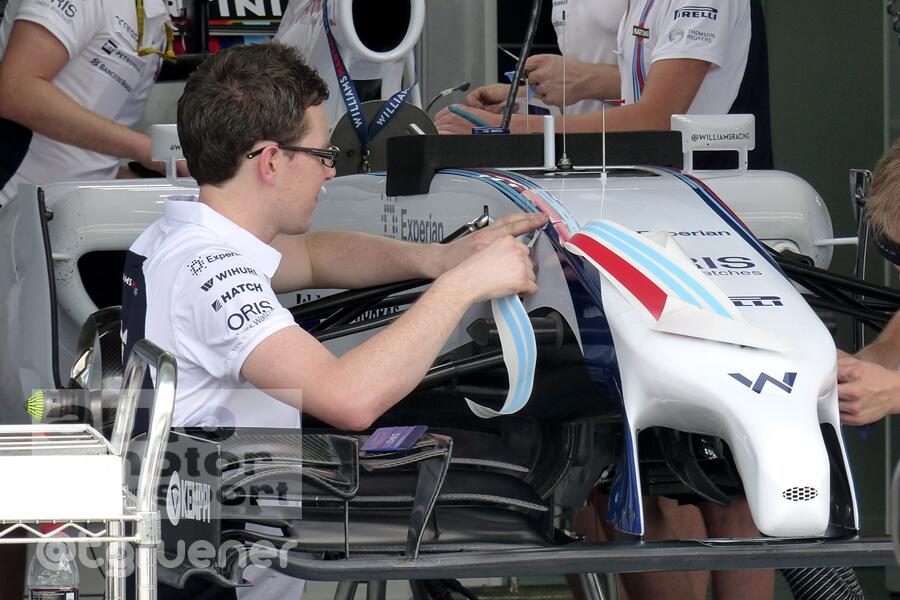- Login or Register
No account yet? Sign up
I can't see this.LookBackTime wrote:The rush to cure ‘Jekyll & Hyde’ Williams
http://www.gptoday.com/full_story/view/ ... _Williams/
Sevach wrote:I can't see this.LookBackTime wrote:The rush to cure ‘Jekyll & Hyde’ Williams
http://www.gptoday.com/full_story/view/ ... _Williams/
Code: Select all
http://www.gptoday.com/full_story/view/482025/The_rush_to_cure_8216Jekyll__Hyde_Williams/Code: Select all
http://richlandf1.com/?p=20562
Now that is interesting to say the least! Extended pushrod under rebound.... some one care to take a stab?Matt Somers wrote:A shot of the Williams push rod movement from the BBC footage
http://s3.photobucket.com/user/Somersra ... 5.mp4.html
There are two things I notice:
1) By watching the markings on the road, the car is weaving left and right a lot. Possibly behind the safety car or on the parade lap.
2) It seems the push rod extends when the wheel is at full left lock.
It seems that at the point of full left lock, the joint expands and this causes the suspension to lower. This would have the effect of dropping the height of car on that side and rolling" the car into the corner. This would help keep the inside front tyre more planted through the corner keep the heat in the tyre.
Does that all sound plausible and why only at large steering angles? Is there enough downforce in faster (straighter) corners that this is not required?

So you are saying that what we are seeing is some twisted anti thesis of bump steer?Henning wrote:n smikle, I don't think it's the rebound causing the change in the push-rod, but the push-rod causing the change in ride height.
Here's my post from a page backThere are two things I notice:
1) By watching the markings on the road, the car is weaving left and right a lot. Possibly behind the safety car or on the parade lap.
2) It seems the push rod extends when the wheel is at full left lock.
It seems that at the point of full left lock, the joint expands and this causes the suspension to lower. This would have the effect of dropping the height of car on that side and rolling" the car into the corner. This would help keep the inside front tyre more planted through the corner keep the heat in the tyre.
Does that all sound plausible and why only at large steering angles? Is there enough downforce in faster (straighter) corners that this is not required?
PhillipM wrote:To disconnect the hub from the damper, they're not just trying to reduce the springrate - you'd just do that with pushrod geometery - they're trying to deliberate excite the hub when the loads are low, probably for keeping more temperature in the front unloaded tyre?Owen.C93 wrote:Having a 2 stage spring effectively allows to to run softer on the inside wheel at high roll angles. As far as I'm aware it's legal but I don't understand why it's done at the hub end of the pushrod.





